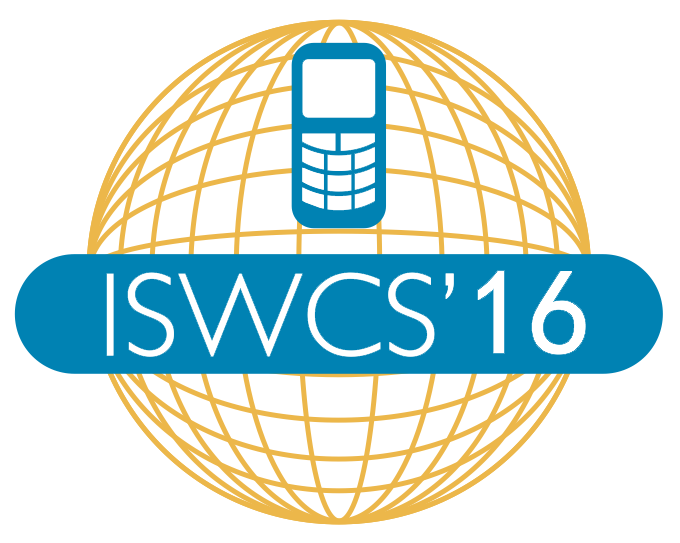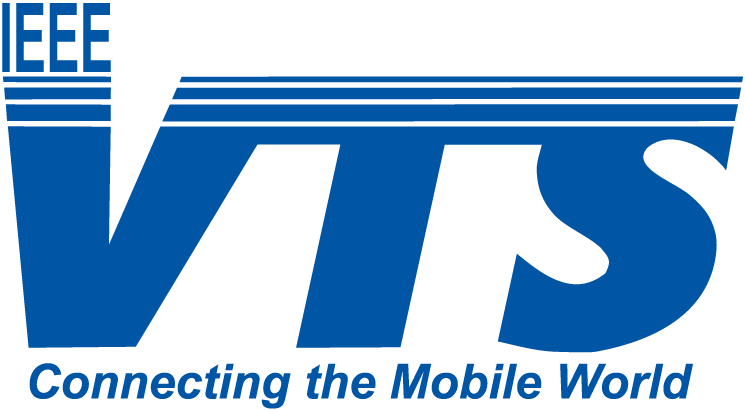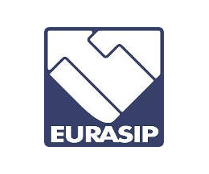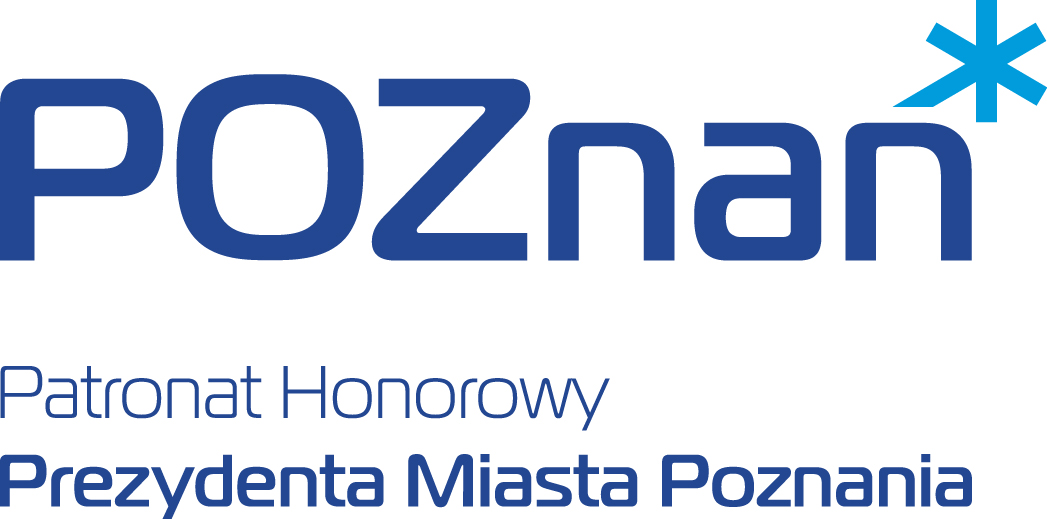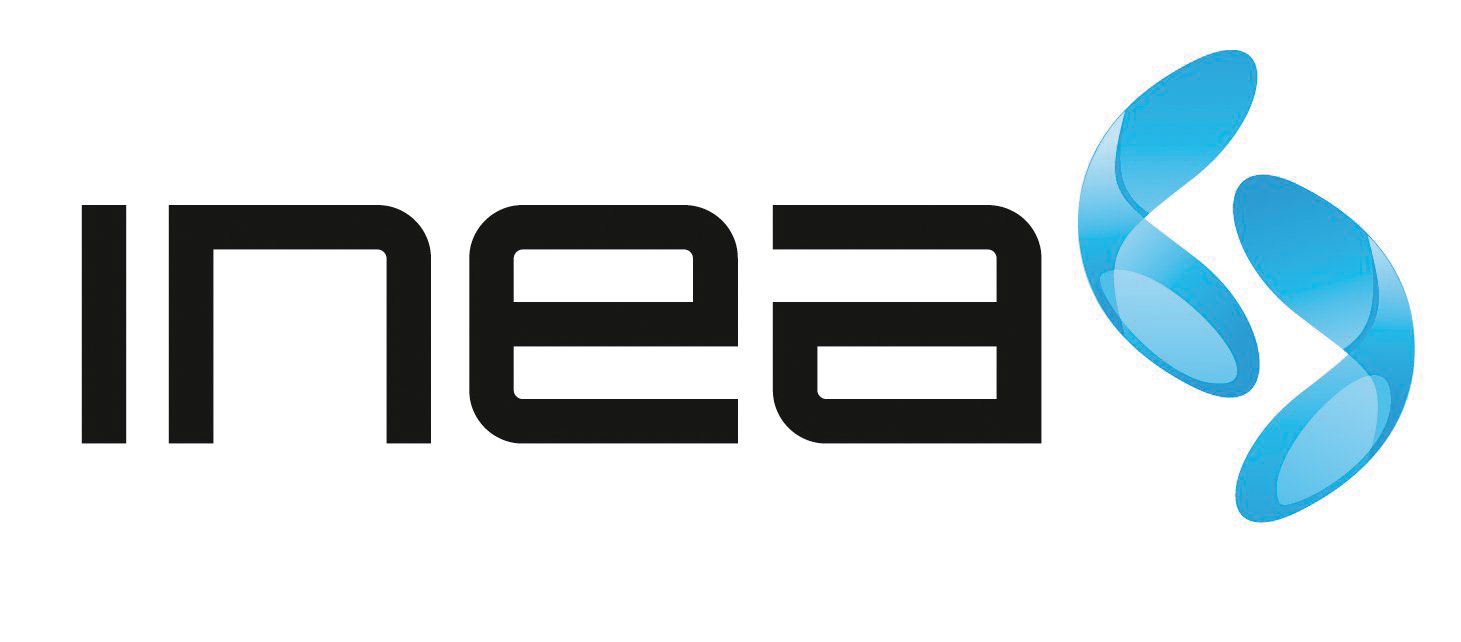Tutorials
- Emerging Topics in 5G Networks: Spectral and Energy Efficient Network Architecture, Transceiver and Algorithm Design
- Rate Splitting for MIMO Wireless Networks: A Promising PHY-Layer Strategy for 5G
- Energy-Neutral System-Level Analysis and Optimization of 5G Wireless Networks
- Coding and Modulation for Communication at the Ultimate Shannon Limit
- Full-Duplex Techniques for 5G and Beyond
- Fronthaul Compression for Cloud Radio Access Networks
Emerging Topics in 5G Networks: Spectral and Energy Efficient Network Architecture, Transceiver and Algorithm Design
Marco Maso and Muhammad Ali Imran
email: marco.maso@huawei.com
Tutorial description
At the dawn of 5G network technology standardization, several topics and research directions are emerging as potential enablers of the expected performance leap that the next generation of wireless and cellular networks should bring over their 4G counterparts. This full-day tutorial starts from this observation to provide an in-depth overview of recent trends and challenges for the deployment of future 5G wireless networks. A comprehensive and balanced coverage of emerging topics and state-of-the-art technologies that will drive the future network architecture, transceiver and algorithm design is given. Specific attention will be devoted to the potential application of such technologies to achieve the spectral and energy efficiency improvement that is expected from 5G wireless and cellular networks. In this context, the key technical challenges that still need to be addressed for the successful rollout and operation of self-sustainable 5G networks and meeting 2020 Energy Efficiency (EE) & Capacity aims will be highlighted. Specifically, this tutorial will provide answers for the following:
- What are the Green competitive technologies to enhance the performance of current cellular networks and meet the requirements of next generation networks?
- What are the economic and ecological impacts of the deployment of heavily heterogeneous networks (HetNets)?
- The energy efficiency increase and energy consumption reduction are two of the most ambitious goals for future 5G networks: Are energy harvesting and wireless energy transfer technologies viable approaches to achieve these objectives?
- How can self-sustainable 5G networks be designed?
More general features of this tutorial are:
- It presents a thorough review of the motivation, taxonomy and solutions to develop spectral and energy efficient 5G wireless networks.
- It introduces several state-of-the-art techniques, e.g. energy efficiency based on power control, cognitive interference reduction, resource allocation, network architecture and transceiver design, all framed in the context of future 5G networks.
- It presents comprehensive comparative studies supported by detailed performance analysis, realistic simulations and illustrative examples on several network deployment and transceiver configurations.
The majority of the presented results are taken from the Authors’ most recent research on green heterogeneous networks, wireless energy transfer and uplink fast power control.
Speaker description
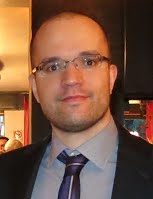 Marco Maso
received the Bachelor’s degree in 2005 and the M.Sc. degree in Telecommunications Engineering in 2008, both from University of Padova, Italy. He received both the Ph.D. degree in Information Engineering from University of Padova and the Ph.D. degree in Telecommunications from Supelec, France, in 2013. He has been engaged in research projects on practical implementations of OFDM packet synchronization, DVB-T2 systems implementation, signal processing algorithms for high speed coherent optical communications, and dynamic spectrum management strategies for mobile ad-hoc networks. He held a position as a research engineer at Supelec in 2012/13 and as a post-doctoral research fellow at Singapore University of Technology and Design in 2013/14. Since September 2014 he is a Researcher with the Mathematical and Algorithmic Sciences Lab of Huawei France Research Center. His research interests broadly span the areas of wireless communications and signal processing for the physical layer, with focus on heterogeneous networks, self-organizing networks, MIMO systems, interference management and suppression techniques, wireless power transfer and cognitive radios. He has been selected for the ”Best of Globecom” award at 2014 IEEE Globecom. Dr. Maso has been actively involved in organizing and chairing sessions, and has served as a member of the Technical Program Committee in a number of international conferences, including IEEE flagship conferences such as WCNC and ICC. He is Guest Editor for the issues of IEEE Wireless Communications Magazine on Wireless Powered Communication Networks: Architectures, Protocol Designs, and Standardization, and of IEEE Communication Magazine on Practical Perspectives on IoT in 5G Networks: From Theory to Industrial Challenges and Business Opportunities. He is an Editor of IEEE Communication Letters. He has been a speaker for tutorials on self-sustainable communications and energy efficient network design in EUCNC 2015, IEEE CAMAD 2105 and EUCNC 2016.
Marco Maso
received the Bachelor’s degree in 2005 and the M.Sc. degree in Telecommunications Engineering in 2008, both from University of Padova, Italy. He received both the Ph.D. degree in Information Engineering from University of Padova and the Ph.D. degree in Telecommunications from Supelec, France, in 2013. He has been engaged in research projects on practical implementations of OFDM packet synchronization, DVB-T2 systems implementation, signal processing algorithms for high speed coherent optical communications, and dynamic spectrum management strategies for mobile ad-hoc networks. He held a position as a research engineer at Supelec in 2012/13 and as a post-doctoral research fellow at Singapore University of Technology and Design in 2013/14. Since September 2014 he is a Researcher with the Mathematical and Algorithmic Sciences Lab of Huawei France Research Center. His research interests broadly span the areas of wireless communications and signal processing for the physical layer, with focus on heterogeneous networks, self-organizing networks, MIMO systems, interference management and suppression techniques, wireless power transfer and cognitive radios. He has been selected for the ”Best of Globecom” award at 2014 IEEE Globecom. Dr. Maso has been actively involved in organizing and chairing sessions, and has served as a member of the Technical Program Committee in a number of international conferences, including IEEE flagship conferences such as WCNC and ICC. He is Guest Editor for the issues of IEEE Wireless Communications Magazine on Wireless Powered Communication Networks: Architectures, Protocol Designs, and Standardization, and of IEEE Communication Magazine on Practical Perspectives on IoT in 5G Networks: From Theory to Industrial Challenges and Business Opportunities. He is an Editor of IEEE Communication Letters. He has been a speaker for tutorials on self-sustainable communications and energy efficient network design in EUCNC 2015, IEEE CAMAD 2105 and EUCNC 2016.
 Muhammad Ali Imran
received his M.Sc. (Distinction) and Ph.D. degrees from Imperial College London, UK, in 2002 and 2007, respectively. Starting from September 2016, he is a Professor in Communication Systems in University of Glasgow, Vice Dean of Glasgow College UESTC and Program Director of Electrical and Electronics with Communications. He is an adjunct Associate Professor at the University of Oklahoma, USA and has served previously in the Institute for Communication Systems (ICS - formerly known as CCSR) at the University of Surrey, UK. He has led a number of multimillion-funded international research projects encompassing the areas of energy efficiency, fundamental performance limits, sensor networks and self-organising cellular networks. He is also leading the new physical layer work area for 5G innovation centre at Surrey. He has a global collaborative research network spanning both academia and key industrial players in the field of wireless communications. He has supervised 21 successful PhD graduates and published over 200 peer-reviewed research papers including more than 20 IEEE Transaction papers. He secured first rank in his B.Sc. and a distinction in his M.Sc. degree along with an award of excellence in recognition of his academic achievements conferred by the President of Pakistan. He has been awarded IEEE Comsoc’s Fred Ellersick award 2014 and FEPS Learning and Teaching award 2014 and twice nominated for Tony Jean’s Inspirational Teaching award. He has given an invited TEDx talk (2015) and more than 10 plenary talks in international conferences including World Wide Radio Forum WWRF (2010), IEEE CAMAD (2012), IEEE VTS/EPSRC Commnet 2012, iCASE 2015, ICT R&D 5G Conference 2015, NOC 2015 summer school FiWiN5G. He has also delivered more than 20 invited seminars in international educational institutions and research centres of leading communication industry. He has presented tutorials on Self Organising Networks and Energy Efficiency in several international conferences: ICFCN Iraq, 2012; ICCSPA UAE, 2013; ICSICCST Pakistan, 2013; IEEE PIMRC UK, 2013; IEEE WCNC Turkey, 2014; IEEE ICC Australia, 2014; European Wireless Spain, 2014, Crowncom 2015, iCASE 2015, IEEE CAMAD 2015, EUCNC 2016.
Muhammad Ali Imran
received his M.Sc. (Distinction) and Ph.D. degrees from Imperial College London, UK, in 2002 and 2007, respectively. Starting from September 2016, he is a Professor in Communication Systems in University of Glasgow, Vice Dean of Glasgow College UESTC and Program Director of Electrical and Electronics with Communications. He is an adjunct Associate Professor at the University of Oklahoma, USA and has served previously in the Institute for Communication Systems (ICS - formerly known as CCSR) at the University of Surrey, UK. He has led a number of multimillion-funded international research projects encompassing the areas of energy efficiency, fundamental performance limits, sensor networks and self-organising cellular networks. He is also leading the new physical layer work area for 5G innovation centre at Surrey. He has a global collaborative research network spanning both academia and key industrial players in the field of wireless communications. He has supervised 21 successful PhD graduates and published over 200 peer-reviewed research papers including more than 20 IEEE Transaction papers. He secured first rank in his B.Sc. and a distinction in his M.Sc. degree along with an award of excellence in recognition of his academic achievements conferred by the President of Pakistan. He has been awarded IEEE Comsoc’s Fred Ellersick award 2014 and FEPS Learning and Teaching award 2014 and twice nominated for Tony Jean’s Inspirational Teaching award. He has given an invited TEDx talk (2015) and more than 10 plenary talks in international conferences including World Wide Radio Forum WWRF (2010), IEEE CAMAD (2012), IEEE VTS/EPSRC Commnet 2012, iCASE 2015, ICT R&D 5G Conference 2015, NOC 2015 summer school FiWiN5G. He has also delivered more than 20 invited seminars in international educational institutions and research centres of leading communication industry. He has presented tutorials on Self Organising Networks and Energy Efficiency in several international conferences: ICFCN Iraq, 2012; ICCSPA UAE, 2013; ICSICCST Pakistan, 2013; IEEE PIMRC UK, 2013; IEEE WCNC Turkey, 2014; IEEE ICC Australia, 2014; European Wireless Spain, 2014, Crowncom 2015, iCASE 2015, IEEE CAMAD 2015, EUCNC 2016.
Rate Splitting for MIMO Wireless Networks: A Promising PHY-Layer Strategy for 5G
Bruno Clerckx and Hamdi Joudeh
email: b.clerckx@imperial.ac.uk
Tutorial description
MIMO processing plays a central part towards the recent increase in spectral efficiencies of wireless networks. MIMO has grown beyond the original point-to-point channel and nowadays refers to a diverse range of centralized and distributed deployments. The fundamental bottleneck towards enormous spectral efficiencies in multiuser MIMO networks lies in a huge demand for accurate channel state information at the transmitter (CSIT). This has become increasingly difficult to satisfy due to the increasing number of antennas and access points in 5G networks relying on dense heterogeneous networks and transmitters equipped with a large number of antennas. CSIT inaccuracy results in a multi-user interference problem that is the primary bottleneck of MIMO wireless networks. Looking backward, the problem has been to strive to apply techniques designed for perfect CSIT to scenarios with imperfect CSIT. This tutorial departs from this conventional approach and introduces the audience to a promising strategy based on rate-splitting. Rate-splitting relies on the transmission of common messages (decoded by multiple users) and private messages (decoded by their corresponding users). This strategy is shown to provide significant benefits in terms of spectral efficiencies, reliability and CSI feedback overhead reduction over conventional strategies used in LTE-A and exclusively relying on private messages. The benefits of rate-splitting will be further demonstrated in a wide range of scenarios: multi-user MIMO, massive MIMO, multi-cell MIMO, overloaded systems, Non-Orthogonal Multiple Access (NOMA), multigroup multicast and caching. Open problems, impact on standard specifications and operational challenges will also be discussed.
Speaker description
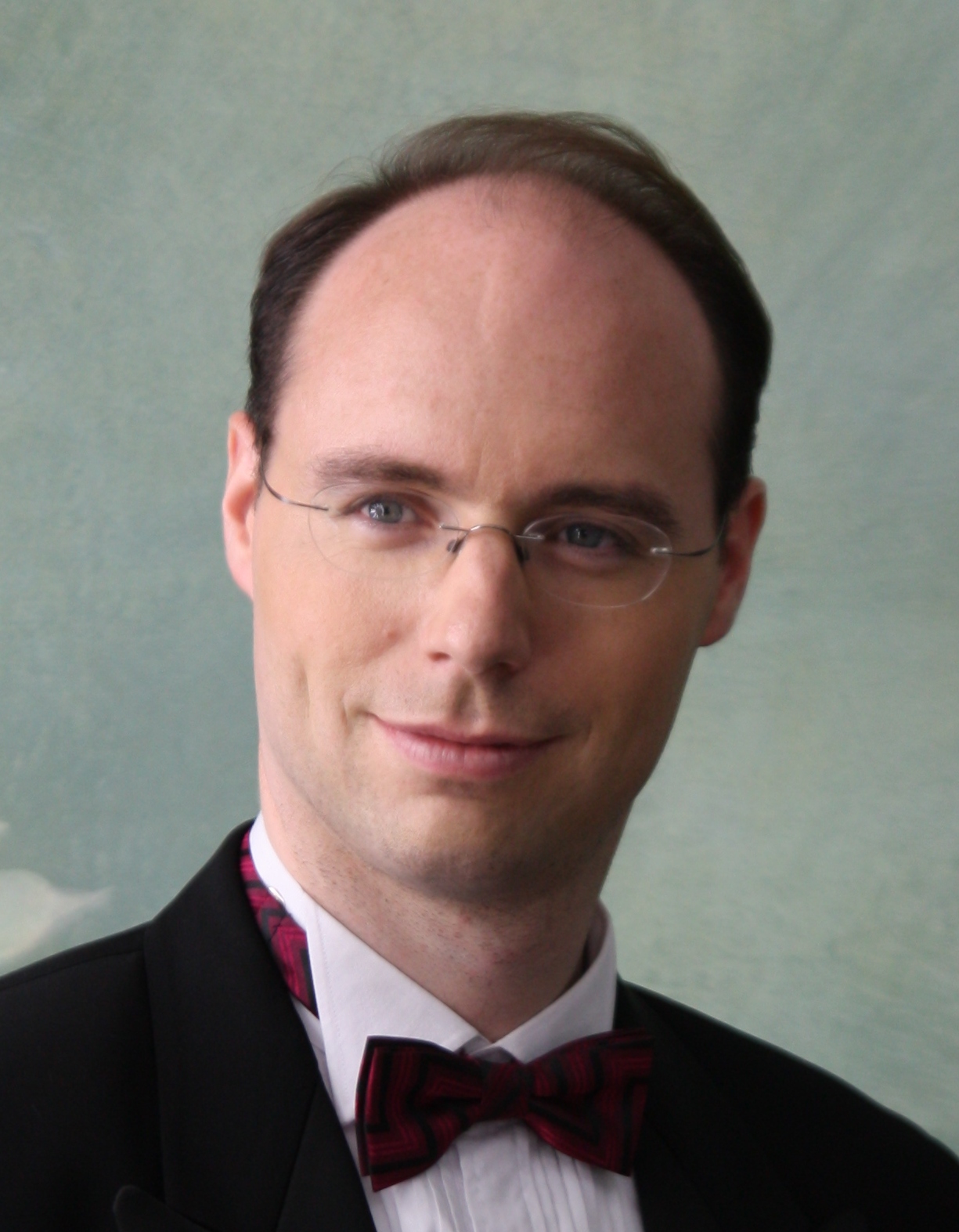 Bruno Clerckx is a Senior Lecturer (Associate Professor) in the Electrical and Electronic Engineering Department at Imperial College London (London, United Kingdom). He received his M.S. and Ph.D. degree in applied science from the Université catholique de Louvain (Louvain-la-Neuve, Belgium) in 2000 and 2005, respectively. From 2006 to 2011, he was with Samsung Electronics (Suwon, South Korea) where he actively contributed to 3GPP LTE/LTE-A and IEEE 802.16m and acted as the rapporteur for the 3GPP Coordinated Multi-Point (CoMP) Study Item. Since 2011, he has been with Imperial College London, first a Lecturer (Assistant Professor) and now as a Senior Lecturer. Since March 2014, he also occupies an Associate Professor position at Korea University, Seoul, Korea. He also held visiting research positions at Stanford University (CA, USA), EURECOM (Sophia-Antipolis, France) and National University of Singapore (Singapore).
He is the author of 2 books, 110 peer-reviewed international research papers, 150 standard contributions and the inventor of 75 issued or pending patents among which 15 have been adopted in the specifications of 4G (3GPP LTE/LTE-A and IEEE 802.16m) standards. Dr. Clerckx served as an editor for IEEE TRANSACTIONS ON COMMUNICATIONS from 2011-2015 and is currently an editor for IEEE TRANSACTIONS ON WIRELESS COMMUNICATIONS. His area of expertise is communication theory and signal processing for wireless networks.
Bruno Clerckx is a Senior Lecturer (Associate Professor) in the Electrical and Electronic Engineering Department at Imperial College London (London, United Kingdom). He received his M.S. and Ph.D. degree in applied science from the Université catholique de Louvain (Louvain-la-Neuve, Belgium) in 2000 and 2005, respectively. From 2006 to 2011, he was with Samsung Electronics (Suwon, South Korea) where he actively contributed to 3GPP LTE/LTE-A and IEEE 802.16m and acted as the rapporteur for the 3GPP Coordinated Multi-Point (CoMP) Study Item. Since 2011, he has been with Imperial College London, first a Lecturer (Assistant Professor) and now as a Senior Lecturer. Since March 2014, he also occupies an Associate Professor position at Korea University, Seoul, Korea. He also held visiting research positions at Stanford University (CA, USA), EURECOM (Sophia-Antipolis, France) and National University of Singapore (Singapore).
He is the author of 2 books, 110 peer-reviewed international research papers, 150 standard contributions and the inventor of 75 issued or pending patents among which 15 have been adopted in the specifications of 4G (3GPP LTE/LTE-A and IEEE 802.16m) standards. Dr. Clerckx served as an editor for IEEE TRANSACTIONS ON COMMUNICATIONS from 2011-2015 and is currently an editor for IEEE TRANSACTIONS ON WIRELESS COMMUNICATIONS. His area of expertise is communication theory and signal processing for wireless networks.
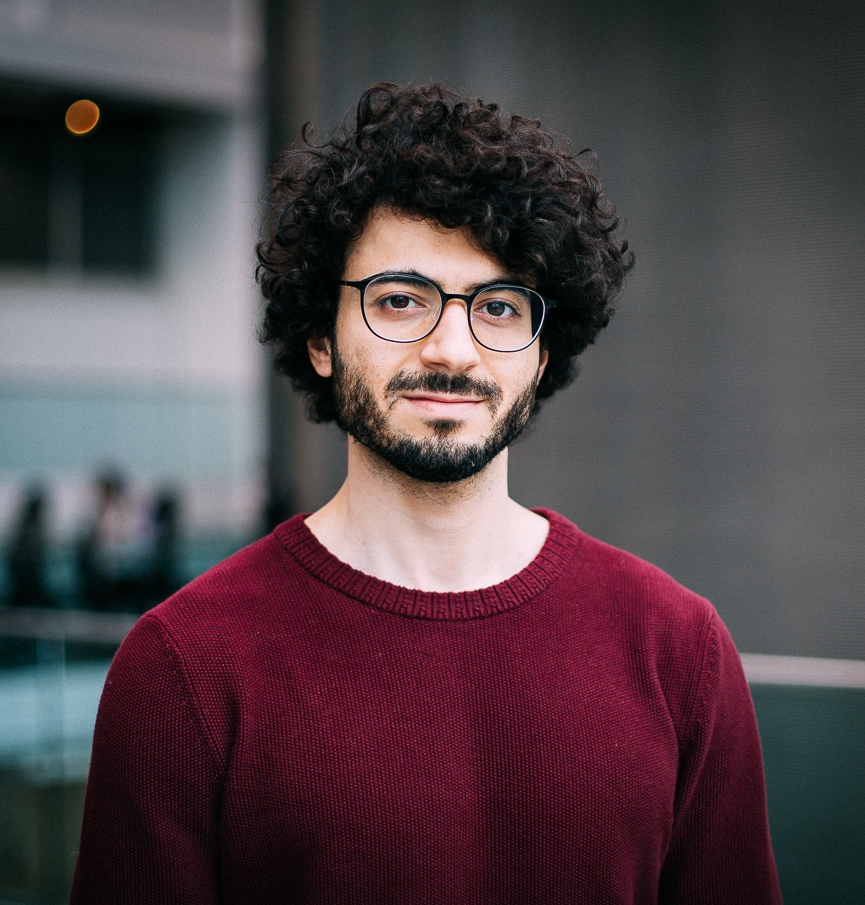 Hamdi Joudeh is a post-doctoral research associate in the Communications and Signal Processing (CSP) Group, Department of Electrical and Electronic Engineering at Imperial College London. He obtained his BSc in Electrical Engineering from the Islamic University of Gaza in 2010 and his MSc and PhD in Communications and Signal Processing from Imperial College London in 2011 and 2016, respectively. During the autumn of 2011, he was with the Mobile Communication Division at Samsung Electronics, Suwon, South Korea, as an engineering intern. His research interests include signal processing and optimization for wireless communication systems, and communication theory.
Hamdi Joudeh is a post-doctoral research associate in the Communications and Signal Processing (CSP) Group, Department of Electrical and Electronic Engineering at Imperial College London. He obtained his BSc in Electrical Engineering from the Islamic University of Gaza in 2010 and his MSc and PhD in Communications and Signal Processing from Imperial College London in 2011 and 2016, respectively. During the autumn of 2011, he was with the Mobile Communication Division at Samsung Electronics, Suwon, South Korea, as an engineering intern. His research interests include signal processing and optimization for wireless communication systems, and communication theory.
Energy-Neutral System-Level Analysis and Optimization of 5G Wireless Networks
Alessio Zappone, Marco Di Renzo, and Eduard Jorswieck
email: marco.di.renzo@gmail.com
Tutorial description
The Internet of Things (IoT) will connect billions of devices by 2020. Such systems suppose batteries and/or energy harvesting from the environment, which also bets for very low energy devices. In order to enable IoT service capabilities, 5G wireless networks will need to bring a drastic energy efficiency improvement and will need to develop energy harvesting capabilities. This energy chase will cover low-energy devices and network elements, and will rely on the availability of renewable energy sources, dedicated power sources, as well as the possibility of harvesting energy directly from the radio waves that are primarily used for data transmission. This leads to a new design space, where the availability of energy is not deterministic anymore but may depend on environmental factors, the interference may not necessarily be harmful as it may be a natural source electromagnetic-based power to be used for replenishing the batteries of low-energy devices, and the intended signals may be exploited for both data transmission and energy harvesting. This paradigm-shift introduces a new concept in the design of 5G wireless networks: energy-neutrality. Energy-neutral networks are systems that not only make an efficient use of the available energy, but, more importantly, that operate in a complete self-powered fashion. The present tutorial provides the audience with a complete survey of the potential benefits, research challenges, implementation efforts and application of technologies and protocols for achieving energy-neutrality, as well as the mathematical tools for their modeling, analysis and optimization. This tutorial is unique of its kind, as it tackles both system-level modeling and optimization aspects, which are usually treated independently. Special focus will be put on two methodologies for enabling the system-level modeling and the system-level and distributed optimization of energy-neutral 5G wireless networks: stochastic geometry and fractional programming. In the proposed tutorial, we illustrate how several candidate transmission technologies, communication protocols, and network architectures for 5G can be modeled, studied, optimized, and compared for their energy-neutral operation.
Speaker description
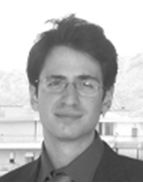 Dr. Alessio Zappone was born in 1982 in Rome, Italy. He obtained his Master degree in telecommunication engineering and his Ph.D. degree in electrical engineering in 2007 and 2011, respectively, from the Universita’ degli Studi di Cassino e del Lazio Meriodionale, Cassino, Italy. His Ph.D. studies were focused on distributed algorithms for energy-efficient resource allocation in wireless networks. After obtaining his Ph.D.
Alessio worked as a Post-doc researcher with CNIT (Consorzio Nazionale Interuniversitario per le Telecomunicazioni) until 2012, working on both centralized and distributed energy efficiency optimization in the framework of the FP7 EU-funded project TREND. Since October 2012, Alessio is with the Technische Universitat Dresden, managing the project CEMRIN on energy-efficient resource allocation in wireless networks, funded by the German research foundation (DFG). Since 2015, Alessio serves as Associate Editor of the IEEE Signal Processing Letters, and he is a Guest Editor of the IEEE JSAC Special issue on “Energy-Efficient Techniques for 5G Wireless Communication Systems”. Alessio’s research interests lie in the area of communication networks and signal processing, with main focus on resource allocation techniques for energy efficiency optimization.
Dr. Alessio Zappone was born in 1982 in Rome, Italy. He obtained his Master degree in telecommunication engineering and his Ph.D. degree in electrical engineering in 2007 and 2011, respectively, from the Universita’ degli Studi di Cassino e del Lazio Meriodionale, Cassino, Italy. His Ph.D. studies were focused on distributed algorithms for energy-efficient resource allocation in wireless networks. After obtaining his Ph.D.
Alessio worked as a Post-doc researcher with CNIT (Consorzio Nazionale Interuniversitario per le Telecomunicazioni) until 2012, working on both centralized and distributed energy efficiency optimization in the framework of the FP7 EU-funded project TREND. Since October 2012, Alessio is with the Technische Universitat Dresden, managing the project CEMRIN on energy-efficient resource allocation in wireless networks, funded by the German research foundation (DFG). Since 2015, Alessio serves as Associate Editor of the IEEE Signal Processing Letters, and he is a Guest Editor of the IEEE JSAC Special issue on “Energy-Efficient Techniques for 5G Wireless Communication Systems”. Alessio’s research interests lie in the area of communication networks and signal processing, with main focus on resource allocation techniques for energy efficiency optimization.
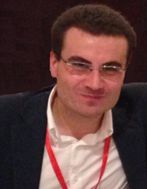 Dr. Marco Di Renzo was born in L’Aquila, Italy, in 1978. He received the Laurea (cum laude) and the Ph.D. degrees in Electrical and Information Engineering from the Department of Electrical and Information Engineering, University of L’Aquila, Italy, in April 2003 and in January 2007, respectively. In October 2013, he received the Habilitation à Diriger des Recherches (Doctor of Science) degree from the University Paris-Sud, Paris, France. He has held various research and academic positions in Italy at the University of L’Aquila, in the USA at Virginia Tech, in Spain at CTTC, and in the UK at The University of Edinburgh. Since 2010, he has been a CNRS Associate Professor (“Chargé de Recherche Titulaire CNRS”) in the Laboratory of Signals and Systems of Paris-Saclay University – CNRS, CentraleSupélec, Univ Paris Sud, France. He is a Distinguished Visiting Fellow of the Royal Academy of Engineering, UK. He is a co-founder of the university spin-off company WEST Aquila s.r.l., Italy. Dr. Di Renzo is the recipient of a special mention for the outstanding five-year (1997-2003) academic career, University of L’Aquila, Italy; the THALES Communications fellowship (2003-2006), University of L’Aquila, Italy; the 2004 Best Spin-Off Company Award, Abruzzo Province, Italy; the 2008 Torres Quevedo Award, Ministry of Science and Innovation, Spain; the “Dérogation pour l’Encadrement de Thèse” (2010), University of Paris-Sud, France; the 2012 IEEE CAMAD Best Paper Award; the 2012 IEEE WIRELESS COMMUNICATIONS LETTERS Exemplary Reviewer Certificate; the 2013 IEEE VTC-Fall Best Student Paper Award; the 2013 Network of Excellence NEWCOM# Best Paper Award; the 2013 IEEE TRANSACTIONS ON VEHICULAR TECHNOLOGY Top Reviewer Award; the 2013 IEEE-COMSOC Best Young Researcher Award for Europe, Middle East and Africa (EMEA Region); the 2014 Royal Academy of Engineering Distinguished Visiting Fellowship, United Kingdom; the 2014 IEEE ATC Best Paper Award; the 2014 IEEE CAMAD Best Demo Award; the 2014 IEEE CAMAD Best Paper Award; the 2014 IEEE WIRELESS COMMUNICATIONS LETTERS Exemplary Reviewer Certificate, the 2015 IEEE ComManTel Best Paper Award; the 2015 IEEE Jack Neubauer Memorial Award; and the 2015-2018 CNRS Award for Excellence in Research and in Advising Doctoral Students. Currently, he serves as an Editor of the IEEE COMMUNICATIONS LETTERS and of the IEEE TRANSACTIONS ON COMMUNICATIONS (Heterogeneous Networks Modeling and Analysis). He is a Senior Member of the IEEE and COMSOC, and a Member of the European Association for Communications and Networking (EURACON).
Dr. Marco Di Renzo was born in L’Aquila, Italy, in 1978. He received the Laurea (cum laude) and the Ph.D. degrees in Electrical and Information Engineering from the Department of Electrical and Information Engineering, University of L’Aquila, Italy, in April 2003 and in January 2007, respectively. In October 2013, he received the Habilitation à Diriger des Recherches (Doctor of Science) degree from the University Paris-Sud, Paris, France. He has held various research and academic positions in Italy at the University of L’Aquila, in the USA at Virginia Tech, in Spain at CTTC, and in the UK at The University of Edinburgh. Since 2010, he has been a CNRS Associate Professor (“Chargé de Recherche Titulaire CNRS”) in the Laboratory of Signals and Systems of Paris-Saclay University – CNRS, CentraleSupélec, Univ Paris Sud, France. He is a Distinguished Visiting Fellow of the Royal Academy of Engineering, UK. He is a co-founder of the university spin-off company WEST Aquila s.r.l., Italy. Dr. Di Renzo is the recipient of a special mention for the outstanding five-year (1997-2003) academic career, University of L’Aquila, Italy; the THALES Communications fellowship (2003-2006), University of L’Aquila, Italy; the 2004 Best Spin-Off Company Award, Abruzzo Province, Italy; the 2008 Torres Quevedo Award, Ministry of Science and Innovation, Spain; the “Dérogation pour l’Encadrement de Thèse” (2010), University of Paris-Sud, France; the 2012 IEEE CAMAD Best Paper Award; the 2012 IEEE WIRELESS COMMUNICATIONS LETTERS Exemplary Reviewer Certificate; the 2013 IEEE VTC-Fall Best Student Paper Award; the 2013 Network of Excellence NEWCOM# Best Paper Award; the 2013 IEEE TRANSACTIONS ON VEHICULAR TECHNOLOGY Top Reviewer Award; the 2013 IEEE-COMSOC Best Young Researcher Award for Europe, Middle East and Africa (EMEA Region); the 2014 Royal Academy of Engineering Distinguished Visiting Fellowship, United Kingdom; the 2014 IEEE ATC Best Paper Award; the 2014 IEEE CAMAD Best Demo Award; the 2014 IEEE CAMAD Best Paper Award; the 2014 IEEE WIRELESS COMMUNICATIONS LETTERS Exemplary Reviewer Certificate, the 2015 IEEE ComManTel Best Paper Award; the 2015 IEEE Jack Neubauer Memorial Award; and the 2015-2018 CNRS Award for Excellence in Research and in Advising Doctoral Students. Currently, he serves as an Editor of the IEEE COMMUNICATIONS LETTERS and of the IEEE TRANSACTIONS ON COMMUNICATIONS (Heterogeneous Networks Modeling and Analysis). He is a Senior Member of the IEEE and COMSOC, and a Member of the European Association for Communications and Networking (EURACON).
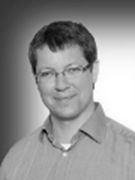 Prof. Eduard A. Jorswieck was born in 1975 in Berlin, Germany. He received his Diplom-Ingenieur (M.S.) degree and Doktor-Ingenieur (Ph.D.) degree, both in electrical engineering and computer science from the Technische Universitat Berlin, Germany, in 2000 and 2004, respectively. He was with the Fraunhofer Institute for Telecommunications, Heinrich-Hertz-Institut (HHI) Berlin, in the Broadband Mobile Communication Networks Department from December 2000 to February 2008. From April 2005 until February 2008, he was a lecturer at the Technische Universitat Berlin. From February 2006 until February 2008, he worked for the Department of Signals, Sensors and Systems at the Royal Institute of Technology (KTH) as a post-doc and Assistant Professor. Since February 2008, he has been the head of the Chair of Communications Theory and Full Professor at Dresden University of Technology (TUD), Germany. Eduard’s main research interests are in the area of signal processing for communications and networks, applied information theory, and communications theory. He has published more than 80 journal papers, more than 225 conference papers, 3 monographs, and 10 book chapters papers on these topics, and has filed 5 patents. Dr. Jorswieck is senior member of IEEE. He has been a member of the IEEE SPCOM Technical Committee from 2008 to 2013. Since 2015, he is elected member of the IEEE SAM TC. From 2011 to 2015, he acted as Associate Editor for IEEE Transactions on Signal Processing. Since 2008, continuing until 2011, he has served as an Associate Editor for IEEE Signal Processing Letters. Since 2012, he is Senior Associate Editor for IEEE Signal Processing Letter. Since 2013, he serves as Associate Editor for IEEE Transactions on Wireless Communications. In 2006, he received the IEEE Signal Processing Society Best Paper Award.
Prof. Eduard A. Jorswieck was born in 1975 in Berlin, Germany. He received his Diplom-Ingenieur (M.S.) degree and Doktor-Ingenieur (Ph.D.) degree, both in electrical engineering and computer science from the Technische Universitat Berlin, Germany, in 2000 and 2004, respectively. He was with the Fraunhofer Institute for Telecommunications, Heinrich-Hertz-Institut (HHI) Berlin, in the Broadband Mobile Communication Networks Department from December 2000 to February 2008. From April 2005 until February 2008, he was a lecturer at the Technische Universitat Berlin. From February 2006 until February 2008, he worked for the Department of Signals, Sensors and Systems at the Royal Institute of Technology (KTH) as a post-doc and Assistant Professor. Since February 2008, he has been the head of the Chair of Communications Theory and Full Professor at Dresden University of Technology (TUD), Germany. Eduard’s main research interests are in the area of signal processing for communications and networks, applied information theory, and communications theory. He has published more than 80 journal papers, more than 225 conference papers, 3 monographs, and 10 book chapters papers on these topics, and has filed 5 patents. Dr. Jorswieck is senior member of IEEE. He has been a member of the IEEE SPCOM Technical Committee from 2008 to 2013. Since 2015, he is elected member of the IEEE SAM TC. From 2011 to 2015, he acted as Associate Editor for IEEE Transactions on Signal Processing. Since 2008, continuing until 2011, he has served as an Associate Editor for IEEE Signal Processing Letters. Since 2012, he is Senior Associate Editor for IEEE Signal Processing Letter. Since 2013, he serves as Associate Editor for IEEE Transactions on Wireless Communications. In 2006, he received the IEEE Signal Processing Society Best Paper Award.
Coding and Modulation for Communication at the Ultimate Shannon Limit
Georg Böcherer and Fabian Steiner
email: fabian.steiner@tum.de, georg.boecherer@tum.de
Tutorial description
After attending this ISWCS 2016 tutorial, the participant is able to use off-the-shelf components to design coding and modulation systems that can operate within 1 dB of log2(1 + SNR) for any desired spectral efficiency. Furthermore, the participant knows how to optimize the components further to decrease the gap to capacity well below 0.5 dB. The tutorial follows a lecture style with interactive participation by examples and code snippets, which can be accessed via a website and can be used with an ordinary smart phone.
Speaker description
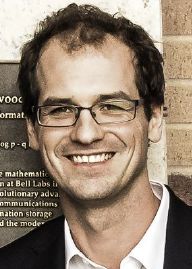 Georg Böcherer was born in Freiburg im Breisgau, Germany. He obtained
his M.Sc. degree in Electrical Engineering and Information
Technology from the ETH Zürich, Switzerland, in 2007, and his Ph.D.
degree from the RWTH Aachen University, Germany, in 2012. He is
now a senior researcher and lecturer at the Institute for Communications
Engineering, Technical University of Munich. His current research
interests are coding, modulation, and probabilistic shaping for
optical, wireless, and wired communications. He served as a co-chair
of the Munich Workshop on Coding and Modulation (MCM 2015) and
chaired the special session on recent advances in coding for higher order
modulation at the 2016 International Symposium on Turbo Codes
& Iterative Information Processing. He received the E-plus award for
his Ph.D. thesis and his proposal on probabilistic shaping for capacity
achieving and rate adaptive communication won the third prize at the
2015 Bell Labs Prize.
Georg Böcherer was born in Freiburg im Breisgau, Germany. He obtained
his M.Sc. degree in Electrical Engineering and Information
Technology from the ETH Zürich, Switzerland, in 2007, and his Ph.D.
degree from the RWTH Aachen University, Germany, in 2012. He is
now a senior researcher and lecturer at the Institute for Communications
Engineering, Technical University of Munich. His current research
interests are coding, modulation, and probabilistic shaping for
optical, wireless, and wired communications. He served as a co-chair
of the Munich Workshop on Coding and Modulation (MCM 2015) and
chaired the special session on recent advances in coding for higher order
modulation at the 2016 International Symposium on Turbo Codes
& Iterative Information Processing. He received the E-plus award for
his Ph.D. thesis and his proposal on probabilistic shaping for capacity
achieving and rate adaptive communication won the third prize at the
2015 Bell Labs Prize.
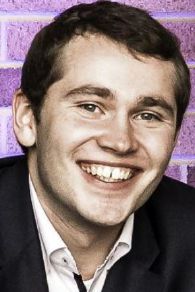 Fabian Steiner was born in Prien am Chiemsee, Germany. He received
the B.Sc. degree and M.Sc. degree (with high distinction) in
electrical engineering from the Technical University of Munich (TUM),
Germany, in 2011 and 2014, respectively. He is now working toward
the Ph.D. degree in a joint research project of the Fachgebiet Methoden
der Signalverarbeitung, TUM, and UC Irvine, CA, USA. He is supervised
by Prof. Utschick, Prof. Nossek and Prof. Swindlehurst. He is
supported by the Institute for Advanced Study, TUM, as part of Prof.
Swindlehurst’s Hans Fischer Senior Fellowship. His current research
interests include coding, modulation and multi-user massive MIMO
systems. He received the Prof. Dr. Ralf Kötter memorial award for
his master’s thesis and won the third prize of the 2015 Bell Labs Prize
with his proposal on probabilistic shaping for capacity achieving and
rate adaptive communication.
Fabian Steiner was born in Prien am Chiemsee, Germany. He received
the B.Sc. degree and M.Sc. degree (with high distinction) in
electrical engineering from the Technical University of Munich (TUM),
Germany, in 2011 and 2014, respectively. He is now working toward
the Ph.D. degree in a joint research project of the Fachgebiet Methoden
der Signalverarbeitung, TUM, and UC Irvine, CA, USA. He is supervised
by Prof. Utschick, Prof. Nossek and Prof. Swindlehurst. He is
supported by the Institute for Advanced Study, TUM, as part of Prof.
Swindlehurst’s Hans Fischer Senior Fellowship. His current research
interests include coding, modulation and multi-user massive MIMO
systems. He received the Prof. Dr. Ralf Kötter memorial award for
his master’s thesis and won the third prize of the 2015 Bell Labs Prize
with his proposal on probabilistic shaping for capacity achieving and
rate adaptive communication.
Full-Duplex Techniques for 5G and Beyond
Hirley Alvesy and Taneli Riihonen
email: halves@ee.oulu.fi
Tutorial description
In-band full-duplex (FD) technology, by which devices transmit and receive simultaneously on the same frequency band, has attracted a lot of research attention lately. Since FD radios can potentially double the spectral efficiency, they are a promising technology for 5G and future wireless networks. However, FD radios suffer from severeself-interference (SI), as well as extra cross-directional coupling between simultaneous uplink and downlink operation which further degrades the overall network performance. To this end, many research groups around the world have proposed new transceiver designs, implemented advanced FD prototypes and have shown that SI can be mitigated almost down to the noise floor, or even below in some cases. All these accomplishments show the feasibility of FD and its applicability for future wireless networks. Despite these fundamental results and achievements, there are still many challenges and open problems to resolve about FD operation. In order to achieve the full potential of FD transmission, it is necessary to cope with the self-interference and develop new mechanisms and efficient protocols. The objective of this tutorial session is to present the state-of-the art of FD systems, discuss the research challenges ahead and lay out all the key applications within emerging and future wireless networks.
Speaker description
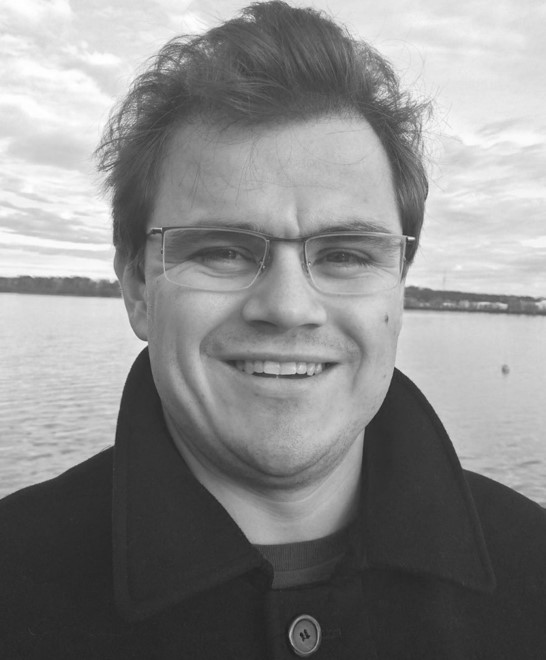 Hirley Alves received the B.Sc. and M.Sc. degrees from Federal University of
Technology - Paraná (UTFPR), Brazil, in 2010 and 2011, respectively, both in Electrical
Engineering and a dual D.Sc. degree from University of Oulu and UTFPR in 2015. His D.Sc.
thesis is closely related to the scope of this tutorial. Dr. Alves has been working at the
Centre for Wireless Communications (CWC), University of Oulu, Finland, since 2011
where he is engaged in several national (Academy of Finland) and international projects
such as BeFemto and DUPLO. He has acted as a Special Session chair in CAMAD'15,
and Track Co-chair at STEMCOM'16, workshop chair at European Wireless 2016 and
a has presented a tutorial on Full-Duplex (jointly with Taneli Riihonen) also at
European Wireless 2016. His research interests are cooperative communications,
full-duplex technologies, physical-layer security and ultra-reliable communication mechanisms for future wireless networks.
Hirley Alves received the B.Sc. and M.Sc. degrees from Federal University of
Technology - Paraná (UTFPR), Brazil, in 2010 and 2011, respectively, both in Electrical
Engineering and a dual D.Sc. degree from University of Oulu and UTFPR in 2015. His D.Sc.
thesis is closely related to the scope of this tutorial. Dr. Alves has been working at the
Centre for Wireless Communications (CWC), University of Oulu, Finland, since 2011
where he is engaged in several national (Academy of Finland) and international projects
such as BeFemto and DUPLO. He has acted as a Special Session chair in CAMAD'15,
and Track Co-chair at STEMCOM'16, workshop chair at European Wireless 2016 and
a has presented a tutorial on Full-Duplex (jointly with Taneli Riihonen) also at
European Wireless 2016. His research interests are cooperative communications,
full-duplex technologies, physical-layer security and ultra-reliable communication mechanisms for future wireless networks.
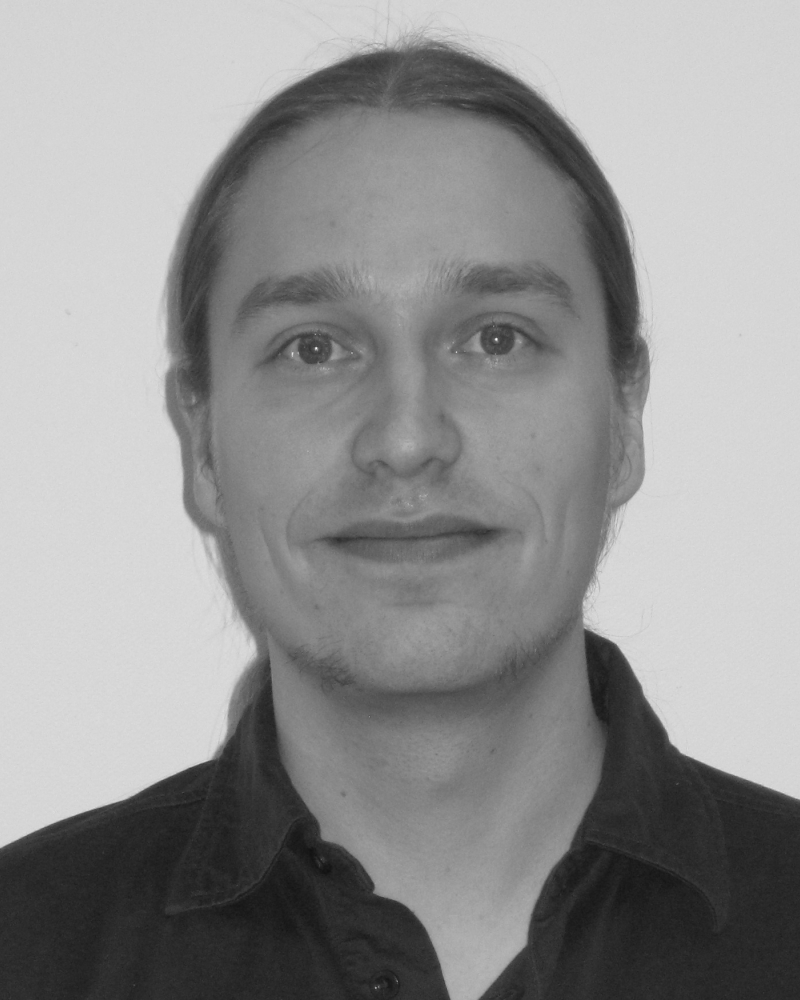 Taneli Riihonen received the D.Sc. degree in electrical engineering (with distinction) from Aalto University, Helsinki, Finland in August 2014.
Related to the scope of this tutorial, his D.Sc. thesis `Design and Analysis of Duplexing Modes and Forwarding Protocols for OFDM(A) Relay Links' was nominated as the best engineering dissertation of the year in Finland. Dr. Riihonen has held various research positions at the Department of Signal Processing and Acoustics, Aalto University School of Electrical Engineering since September 2005. He is serving as an Editor of IEEE Communications Letters since October 2014. Taneli has given a tutorial on Full-Duplex (jointly with Hirley Alves) at European Wireless 2016. His research activity is focused on physical-layer multicarrier, multiantenna, relaying and full-duplex wireless techniques with current interest in the evolution of 5G systems.
Taneli Riihonen received the D.Sc. degree in electrical engineering (with distinction) from Aalto University, Helsinki, Finland in August 2014.
Related to the scope of this tutorial, his D.Sc. thesis `Design and Analysis of Duplexing Modes and Forwarding Protocols for OFDM(A) Relay Links' was nominated as the best engineering dissertation of the year in Finland. Dr. Riihonen has held various research positions at the Department of Signal Processing and Acoustics, Aalto University School of Electrical Engineering since September 2005. He is serving as an Editor of IEEE Communications Letters since October 2014. Taneli has given a tutorial on Full-Duplex (jointly with Hirley Alves) at European Wireless 2016. His research activity is focused on physical-layer multicarrier, multiantenna, relaying and full-duplex wireless techniques with current interest in the evolution of 5G systems.
Fronthaul Compression for Cloud Radio Access Networks
Abdellatif Zaidi and Inaki Estella Aguerri
email: Abdellatif.Zaidi@u-pem.fr
Tutorial description
Cloud radio access networks (CRAN) provide a new architecture for next-generation wireless cellular
systems in which the baseband processing is migrated from the base stations (BSs) to a central
processor (CP) in the "cloud". The BSs operate as simple radio units (RUs) and are connected to
the CP via fronthaul links. The fronthaul links carry information about the baseband signals, in
the form of quantized inphase and quadrature (IQ) samples. This CRAN architecture is generally
seen as a possible means of enabling interference management at the geographical scale covered by
the distributed radio units, through the allowed joint processing at the CP. Also, it has some other
appreciable features, such as low cost deployment of BSs and
exible network utilization.
Due to the large volumes of the quantized IQ signals, compression prior to transmission on the fron-
thaul links is critical. Current solutions, which are the object of various standardization eforts,
prescribe the use of conventional scalar quantizers for this purpose. However, with this approach,
fronthaul links are known to impose an important bottleneck to the system performance. Therefore,
more advanced forms of compression are needed and are receiving considerable interest.
Multiterminal compression allows for the joint processing of the compressed IQ samples of diferent
RUs at the CP. Speciacally, in the uplink, joint decompression enables the CP to leverage the
correlation among the signals received by neighboring RUs through Wyner-Ziv coding. In the
downlink, the joint compression allows the CP to correlate the quantization noises of the baseband
signals transmitted by neighboring RUs, through multivariate compression.
Multiterminal compression uses unstructured quantization codebooks that are designed indepen-
dently of the channel codebooks used for transmission on the wireless channel. A conceptually
diferent technique, which employs structured codebooks, leads to new strategies for the CRAN
that are based on the framework of compute-and-forward.
This tutorial is aimed at providing a survey of the work in the area of fronthaul compression
with emphasis on advanced signal processing solutions, based on communication and information
theoretic concepts. Speciacally, the main ideas that are brought to bear from network information
theory are multiterminal compression and structured coding.
Speaker description
 Abdellatif Zaidi received the B.S. degree in Electrical Engineering
from ENSTA ParisTech, Paris, in 2002 and the M. Sc. and Ph.D. degrees in Electrical Engineering
from TELECOM ParisTech, Paris, France in 2002 and 2006, respectively.
From December 2002 to March 2006, he was with the Communications an Electronics Dept., TELE-
COM ParisTech, Paris, France and the Signals and Systems Lab., CNRS/Supelec, France pursuing
his PhD degree. From May 2006 to September 2010, he was at Ecole Polytechnique de Louvain,
Universite Catholique de Louvain, Belgium, working as a research assistant. Dr. Zaidi was "Re-
search Visitor" at the University of Notre Dame, Indiana, USA, during fall 2007 and Spring 2008,
and the Technical University of Munich during Summer 2014, and the Ecole Polytechnique Fede-
rale de Lausanne, EFPL, Switzerland. He is an associate professor at Universite Paris-Est, France ;
and on leave since Jan. 2015 at the Mathematics and Algorithmic Sciences Lab., France Research
Center, Huawei France.
Abdellatif Zaidi received the B.S. degree in Electrical Engineering
from ENSTA ParisTech, Paris, in 2002 and the M. Sc. and Ph.D. degrees in Electrical Engineering
from TELECOM ParisTech, Paris, France in 2002 and 2006, respectively.
From December 2002 to March 2006, he was with the Communications an Electronics Dept., TELE-
COM ParisTech, Paris, France and the Signals and Systems Lab., CNRS/Supelec, France pursuing
his PhD degree. From May 2006 to September 2010, he was at Ecole Polytechnique de Louvain,
Universite Catholique de Louvain, Belgium, working as a research assistant. Dr. Zaidi was "Re-
search Visitor" at the University of Notre Dame, Indiana, USA, during fall 2007 and Spring 2008,
and the Technical University of Munich during Summer 2014, and the Ecole Polytechnique Fede-
rale de Lausanne, EFPL, Switzerland. He is an associate professor at Universite Paris-Est, France ;
and on leave since Jan. 2015 at the Mathematics and Algorithmic Sciences Lab., France Research
Center, Huawei France.
His research interests cover a broad range of topics from network information theory, coding and
communication theory, as well as multiterminal source coding, with application to diverse problems
of data transmission and compression in networks. A. Zaidi serves as Associate Editor of the Eurasip
Journal on Wireless Communications and Networking (EURASIP JWCN). Dr. Zaidi is the co-
recipient (jointly with Shlomo Shamai (Shitz)) of the N# Best Paper Award, as well as the French
Excellence in Research price. He has published more than 80 international journal and conference
papers, and gave several keynote speeches and tutorials.
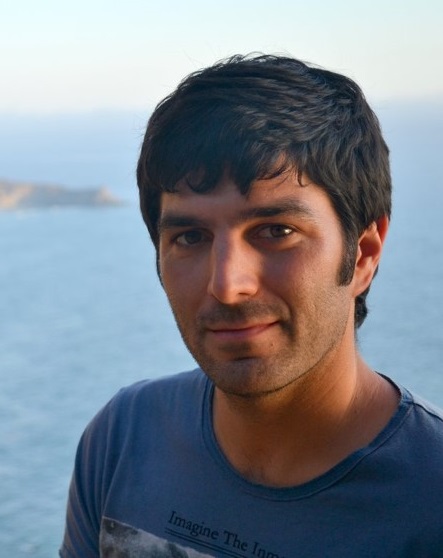 Inaki Estella Aguerri, received his B.Sc. and M.Sc. degrees in Telecommunication Engineering
from Universitat Politecnica de Catalunya (UPC), Barcelona, Spain, in 2008 and
2011, respectively, and the Ph.D. degree in Electrical Engineering from Imperial College
London, London, UK, in 2014. From 2008 to 2013, he was Research Assistant at Centre
Tecnol`ogic de Telecomunicacions de Catalunya (CTTC) in Barcelona, Spain. He was Visiting
Scholar at Stanford University in summer 2012, and he pursued his B.Eng thesis at
the Eindhoven University of Technology in the Biomedical Image Analysis group in 2008.
In November 2014, he joined the Mathematical and Algorithmic Sciences Lab, France Research
Center, Huawei Technologies Co. Ltd., Boulogne-Billancourt, France. His current
research interests lie in the areas of information theory and communication theory, with
emphasis on multi-terminal source and channel coding, and its applications in for data
communications and compression in wireless networks.
Inaki Estella Aguerri, received his B.Sc. and M.Sc. degrees in Telecommunication Engineering
from Universitat Politecnica de Catalunya (UPC), Barcelona, Spain, in 2008 and
2011, respectively, and the Ph.D. degree in Electrical Engineering from Imperial College
London, London, UK, in 2014. From 2008 to 2013, he was Research Assistant at Centre
Tecnol`ogic de Telecomunicacions de Catalunya (CTTC) in Barcelona, Spain. He was Visiting
Scholar at Stanford University in summer 2012, and he pursued his B.Eng thesis at
the Eindhoven University of Technology in the Biomedical Image Analysis group in 2008.
In November 2014, he joined the Mathematical and Algorithmic Sciences Lab, France Research
Center, Huawei Technologies Co. Ltd., Boulogne-Billancourt, France. His current
research interests lie in the areas of information theory and communication theory, with
emphasis on multi-terminal source and channel coding, and its applications in for data
communications and compression in wireless networks.
